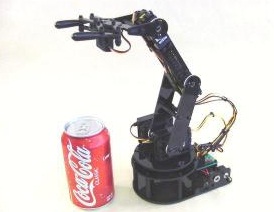





Published on Nov 30, 2023
Human-Robot has recently received considerable attention in the academic community, in labs, in technology companies, and through the media. Because of this attention, it is desirable to present a survey of HR to serve as a tutorial to people outside the field and to promote discussion of a unified vision of HR within the field.
The goal of this review is to present a unified treatment of HR-related problems, to identify key themes, and discuss challenge problems that are likely to shape the field in the near future. Although the review follows a survey structure, the goal of presenting a coherent "story" of HR means that there are necessarily some well-written, intriguing, and influential papers that are not referenced. Instead of trying to survey every paper, we describe the HR story from multiple perspectives with an eye toward identifying themes that cross applications.
A humanoid robot is a robot with its overall appearance, based on that of the human body , allowing interaction with made-for-human tools or environments. In general humanoid robots have a torso with a head, two arms and two legs, although some forms of humanoid robots may model only part of the body, for example, from the waist up. Some humanoid robots may also have a 'face', with 'eyes' and 'mouth'. Androids are humanoid robots built to aesthetically resemble a human. A humanoid robot is an autonomous robot because it can adapt to changes in its environment or itself and continue to reach its goal. This is the main difference between humanoid and other kinds of robots. In this context, some of the capacities of a humanoid robot may include, among others:
self-maintenance (like recharging itself)
autonomous learning (learn or gain new capabilities without outside assistance, adjust strategies based on the surroundings and adapt to new situations)
avoiding harmful situations to people, property, and itself
safe interacting with human beings and the environment
Like other mechanical robots, humanoid refer to the following basic components too: Sensing, Actuating and Planning and Control. Since they try to simulate the human structure and behavior and they are autonomous systems, most of the times humanoid robots are more complex than other kinds of robots.
The main goal in designing a novel humanoid hands is to fulfill critical requirements such as functionality, controllability, low weight, low energy consumption and noiseless. These requirements can be fulfilled by an integrated design approach called biomechatronic design.
The first step towards this objective is to enhance the hand dexterity by increasing the DOF and reducing size of the system. The main problem in developing such a hand is the limited space available to integrate actuators within the hand. Anyway, recent progress in sensors, actuators and embedded control technologies are encouraging the development of such hand.
The proposed biomechatronic hand will be equipped with three actuators systems to provide a tripod grasping: two identical finger actuators systems and one thumb actuator system.
The finger actuator system is based on two micro actuators which drive respectively the metacarpo-phalangeal joint (MP) and the proximal inter-phalangeal joint (PIP); for cosmetic reasons, both actuators are fully integrated in the hand structure: the first in the palm and the second within the proximal phalanx. The distal inter-phalangeal (DIP) joint is driven by a four bar link connected to the PIP joint.
The grasping task is divided in two subsequent phases:
1> Reaching and shape adapting phase;
2> Grasping phase with thumb opposition.
In fact, in phase one the first actuator system allows the finger to adapt to the morphological characteristics of the grasped object by means of a low output torque motor. In phase two, the thumb actuator system provides a power opposition useful to manage critical grips, especially in case of heavy or slippery objects.
A first analysis based on the kinematics characteristics of the human hand, during grasping tasks, led us to approach the mechanical design with a multi-DOF hand structure. Index and middle finger are equipped with active DOF respectively in the MP and in the PIP joints, while the DIP joint is actuated by one driven passive DOF.
The thumb movements are accomplished with two active DOF in the MP joint and one driven passive DOF in the IP joint. This configuration will permit to oppose the thumb to each finger.
A general framework for artificial perception and sensory-motor co-ordination in robotic grasping has been proposed at the ARTS LAB, based on the integration of visual and tactile perception, processed through anthropomorphic schemes for control, behavioral planning and learning. The problem of grasping has been sub-divided into four key problems, for which specific solutions have been implemented and validated through experimental trials, relying on anthropomorphic sensors and actuators, such as an integrated fingertip (including a tactile, a thermal and a dynamic sensor), a retina-like visual sensor, and the anthropomorphic Dexter arm and Marcus hand.

The Marcus Hand with the integrated fingertip And the Dexter Arm
In particular,
1. Planning of the pre-grasping hand shaping,
2. Learning of motor co-ordination strategies.
3. Tactile-motor co-ordination in graspind and
4. Object classification based on the visuo-tactile information are described and reported in the following paragraphs.
The first module has the aim of providing the capability of planning the proper hand, in the case of a multi-fingered hand, based on geometrical features of the object to be grasped. A neuro-fuzzy approach is adopted for trying to replicate human capability of processing qualitative data and of learning.
The base of knowledge on which the fuzzy system can process inputs and determine outputs is built by a neural network (NN). The trained system has been validated on a test set of 200 rules, of which the 92.15% was correctly identified
| Are you interested in this topic.Then mail to us immediately to get the full report.
email :- contactv2@gmail.com |